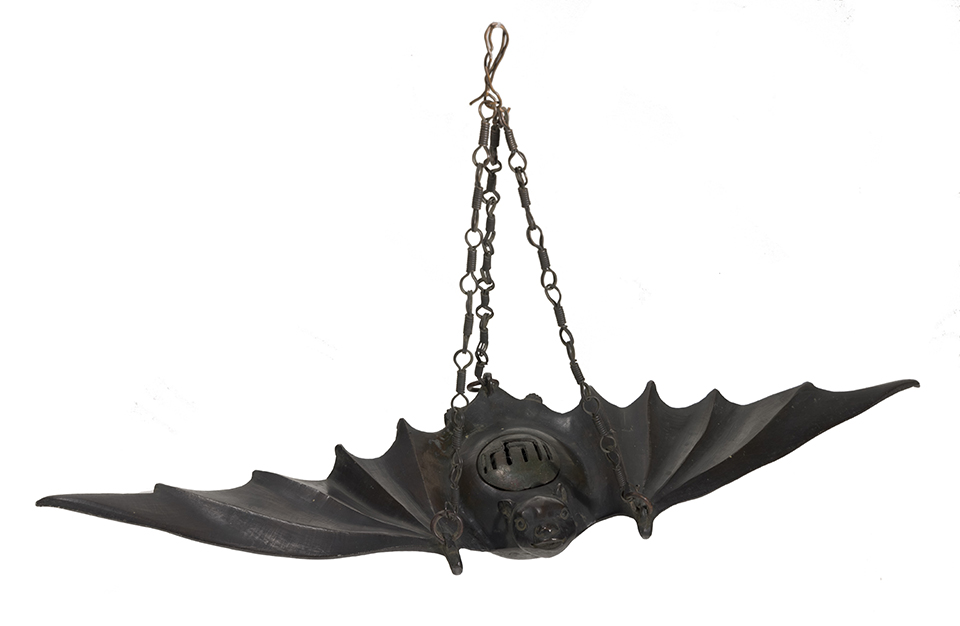
In the United States, October sees the arrival of all things Halloween-related, and one of the most commonly seen decorative motifs associated with the season is the bat. In other cultures, bats are not necessarily spooky creatures associated with witchcraft or evil, but rather are regarded as auspicious symbols of good fortune. This month's featured object is such an example.
This bronze Japanese censer (koro, or incense burner, is formed in the shape of a bat. Its thick bronze walls held incense in the central hollow portion of the bat's body; the circular cover with decorative openwork visible on the bat’s back would allow smoke to escape. The incense, often of agarwood or sandalwood, could be burned to purify one's spirit, aid in meditation, or simply to provide a pleasing aroma. Three rings attached to the top of the body and wings are attached to wires for hanging the censer from a hook or other mount.
This item was acquired by Charles Longfellow during his during his twenty-month stay in Japan from 1871 to 1873. He collected many Japanese bronze pieces and expressed admiration for their craftsmanship. Bronze figures, incense burners, mirror stands and other items in the shape of animals, including cranes, frogs, lobsters, bats, and mythical creatures including dragons and foo dogs seem to have especially appealed to him. After his return to Cambridge, he decorated his sitting room with many of the things he had purchased in Japan, including this censer. It is visible in an 1870s photograph of his room, hanging from the central light fixture. It is unknown whether or not Charles used the piece for its intended purpose as an incense burner, or if it served as a purely decorative item. Sometime after his death in 1893, the bat was removed from Charles' sitting room, which came to be referred to as the "Japanese Room", and was displayed in other parts of the house.
This piece is currently featured in our special on site exhibit Thoroughly Japanese, a close look at Charles Longfellow’s collection of Japanese objects. It can be viewed in person until the end of our open season on October 30. An accompanying online exhibit can be viewed elsewhere on our web site at: “Thoroughly Japanese”: Charley Longfellow’s Collection (U.S. National Park Service) (nps.gov).
